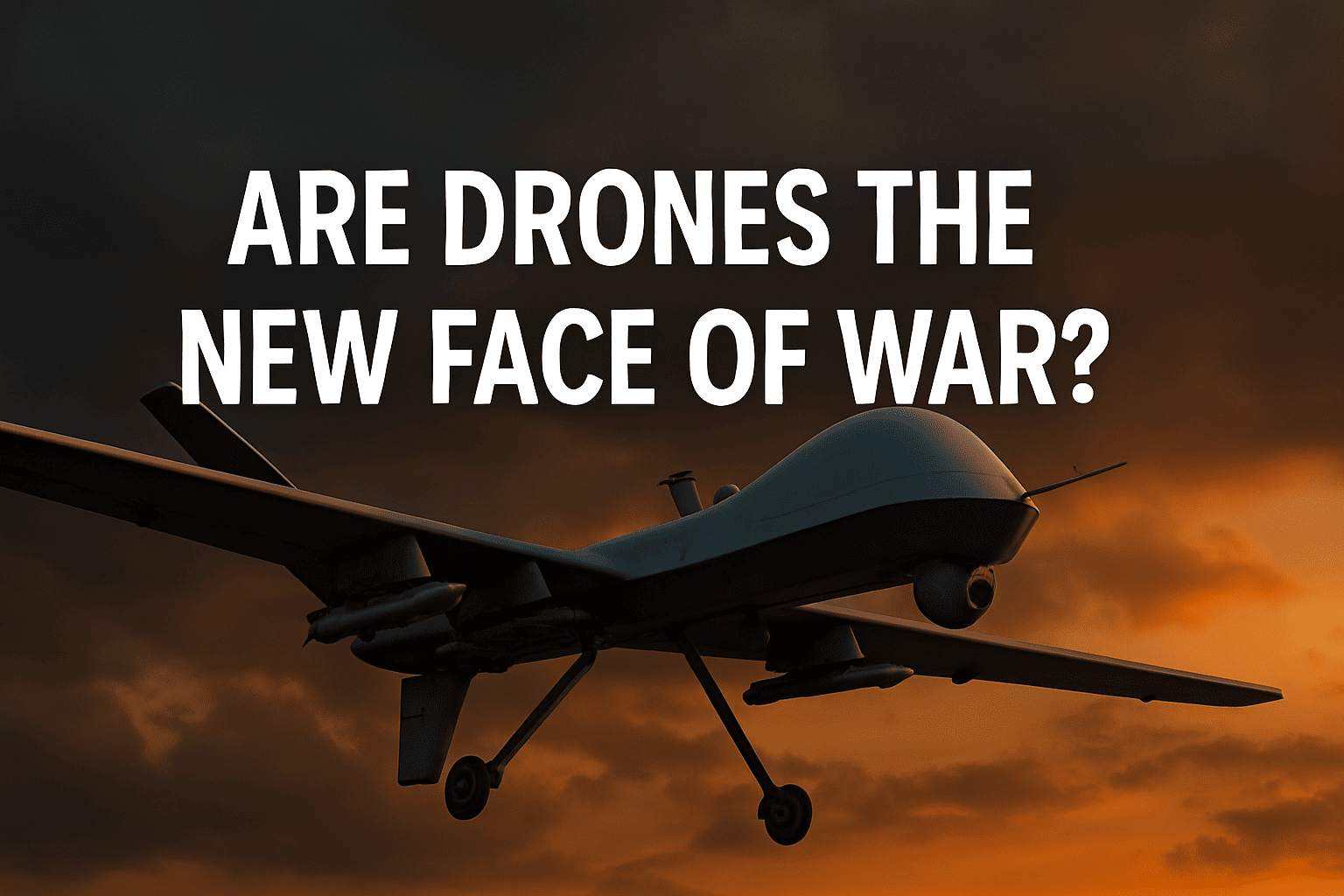War is changing. In the past, battles were fought face-to-face, with tanks, jets, and boots on the ground. Today, much of that is shifting to the sky—unmanned and often invisible. Drones, once tools for aerial photography and surveillance, have become powerful weapons. But are they now the new face of war?
The Rise of Military Drones
Military drones—also known as UAVs (Unmanned Aerial Vehicles)—have become key players on the modern battlefield. Countries around the world now use drones for intelligence gathering, target tracking, and in many cases, for launching deadly missile strikes.
The appeal is clear: drones don’t require a pilot on board, they reduce the risk to human soldiers, and they can be operated remotely from thousands of miles away. What once required an air force squadron can now be done with a drone and a satellite link.
Loitering Munitions and Kamikaze Drones
One of the most talked-about technologies in recent years is the loitering munition, also known as a “kamikaze drone.” These small, low-cost drones can fly around an area waiting for a target, then dive in and explode on impact. Used in conflicts like those in Ukraine and the Middle East, they’ve proven to be highly effective and difficult to stop.
This isn’t just futuristic warfare—it’s happening now. With just a few drones, even smaller nations or non-state actors can strike with surprising precision.
Precision, Power, and AI Integration
Modern drones are more than remote-controlled aircraft. Many use artificial intelligence to recognize objects, avoid obstacles, and even choose targets. This raises important questions: What role will humans play in the decision to strike? How do we control weapons that can think and act on their own?
Drones equipped with guided missiles can target vehicles, buildings, and individuals with extreme accuracy. In some cases, a drone strike can take out a target with minimal collateral damage—something traditional bombs and missiles often fail to do.
The Ethics and Dangers
As drones become more common in combat, so do the debates. Supporters argue they save lives by reducing the need for troops in dangerous zones. Critics warn of a future where war becomes too easy to start and too hard to control.
Who is responsible if an AI-powered drone makes a mistake? What happens when countries start using drone swarms that can overpower traditional defense systems?
These aren’t questions for the future—they’re challenges we’re facing now.
The Future of Warfare
It’s clear that drones are not just tools—they’re changing the nature of warfare itself. We’re moving toward a time when battles may be fought almost entirely by machines, with decisions made in seconds by algorithms.
From loitering munitions to surveillance swarms, drones are becoming faster, smarter, and deadlier. And as more nations invest in drone technology, the question isn’t just if they are the future of war—it’s whether we’re ready for it.
Conclusion
Drones have gone from silent observers to front-line fighters. Their ability to strike from afar, with precision and little risk to operators, has made them the new icons of modern conflict. As we continue to develop smarter and more autonomous systems, drones will likely define how wars are fought—and won—in the years to come.
Read also:
Explore more tech updates here → Click here


1 thought on “Are Drones the New Face of War?”